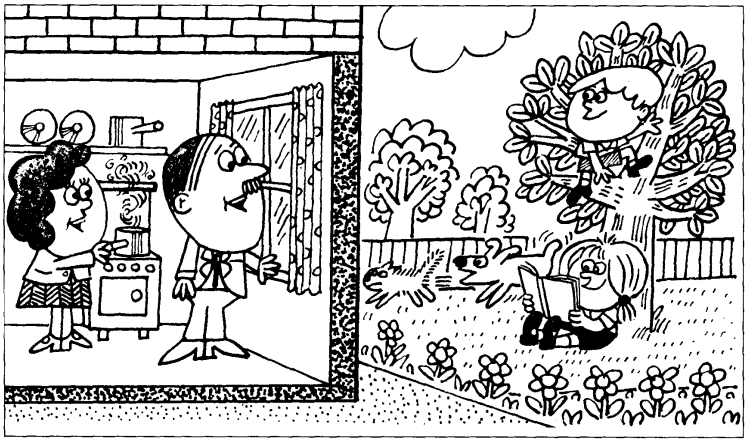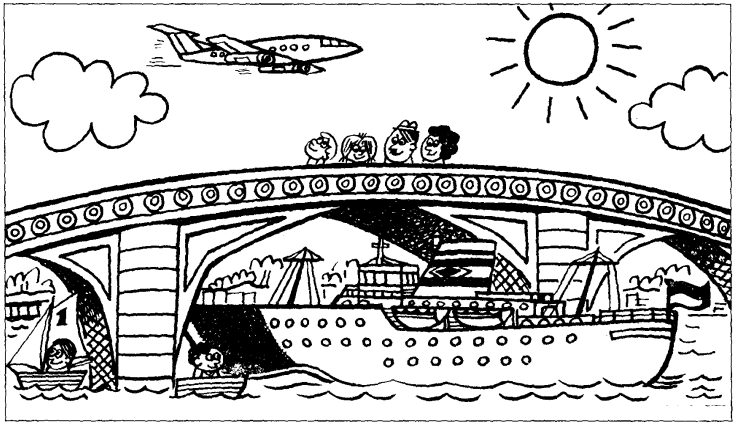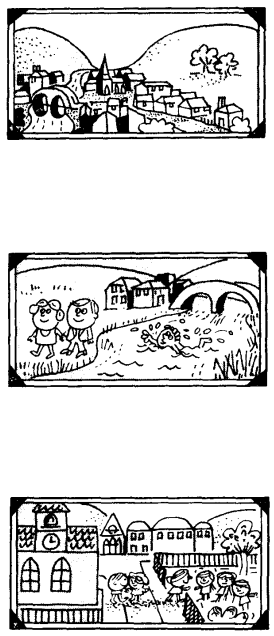one|Lesson 31~40
Lesson 31~32
✨课文

✨单词
现在进行时
⚡本课重点
时:动作发生的时间
态:动作的样子和状态
现在进行时:动作发生的时间是「现在」,动作的状态是「进行中」。核心结构是 am/is/are+V.ing,其中助动词be表示动作发生的时间,实义动词V.ing表示动作的状态。对应中文语境中的 正在做...
肯定句:表示现在正在进行或者发生的动作、状态。
主语+am/is/are+V.ing(+其他)e.g. He's reading a book.
否定句:只需在
be的后面加上not即可。主语+am/is/are+not+V.ing(+其他)e.g. He's not reading a book.
一般疑问句:只需将
be提到句首(主语前面)即可。Am/Is/Are+主语+V.ing(+其他)e.g. Is he reading a book?
特殊疑问句:在一般疑问句的句首加上特殊疑问词并去掉答案。
特殊疑问词+am/is/are+主语+V.ing(+其他)e.g. He's reading a book. => Is he reading a book? => What is he doing?
先把陈述句中的
be动词提到句首得到一般疑问句,再用what对一般疑问句中的答案reading a book进行提问,并将what提到句首
动词现在分词的规则变化
对于大多数动词来说,在动词后面直接加
-ing即可构成现在分词e.g. doing、climbing
以
-e结尾的动词,要去掉-e再加-inge.g. making、coming
如果动词只有一个元音字母,并且其后面跟了一个辅音字母时(往往以重读闭音节的形式出现,即
辅元辅),先双写词尾辅音字母再加-inge.g. running、sitting
现在进行时还能表示将来:某些非延续性动词的现在进行时可表示按计划、安排将要发生的动作,常见的有go、come、arrive、leave、start等
- e.g. They're getting married next month.、They're leaving for Beijing.
特殊疑问句的特殊情况:对主语提问时,直接用特殊疑问词替代主语即可
- e.g. Tim is climbing the tree. => Who is climbing the tree?
这个例子中,直接对主语Tim进行提问,用Who将其替代即可
Lesson 33~34
✨课文

✨单词
⚡本课重点
在31~32课中学习了现在进行时的be单数形式,本节来学习其复数形式
当句中主语名词为复数、人称代词为第二人称或第三人称复数时,助动词be的现在时形式应为are
- e.g. They are walking over the bridge.
on和over的区别:它们都有「在...上面」的意思。但是on的关系双方之间需要直接接触表面,而over的关系双方可以不直接接触表面,常常用于表示悬浮在其上面
- e.g. There is a book on the desk.、The sky is over our heads.
ship和boat的区别:它们都是「船」的意思。但是ship表示的是在海洋中行驶的「大船」,而boat则是在河流中行驶的「小船」
Lesson 35~36
✨课文

✨单词
⚡本课重点
动词短语:通常是指在动词的后面跟一个介词或副词短语形成的结构
结构:动词+介词/副词小品词
在英语中存在着一种用动词短语代替与其同义的单个动词的用法,这种用法称为「动词短语化」。例如听到敲门声,我们会说come in,而不会用enter来表达。最常见的动词短语是由英语中最短小和最简单的动词构成的,这些动词常与表示位置或方向的词组合,例如along、down、in、out、off、on、over、under等
不仅一个动词可以和大量的介词或副词小品词组合在一起构成动词短语,一个动词短语本身也可能有几种不同的意思
- e.g.
put on your coat、put it on
other和another
other+单数/复数another+单数
Lesson 37~38
✨课文

✨单词
一般将来时
⚡本课重点
一般将来时:动作发生的时间是「将来」,动作没有具体的状态(零状态)
本节课要学习的是 be+going to+V. 结构的一般将来时。在之后的91~92课中会学习 will/shall+V. 结构的一般将来时
当句中主语名词为复数、人称代词为第二人称或第三人称复数时,助动词be的现在时形式应为are。在口语中常常会用gonna替代going to
be going to表示将来
肯定句:
主语+am/is/are+going to+V.(+其他)表示打算、准备做某事
e.g. He is going to sleep.
表示按计划、安排要发生的事
e.g. The meeting is going to begin at nine.
表示预言一件事即将发生
e.g. It's going to rain.
否定句:只需在
be的后面加上not即可。主语+am/is/are+not+going to+V.(+其他)e.g. He is not going to sleep.
一般疑问句:只需将
be提到句首(主语前面)即可。Am/Is/Are+主语+going to+V.(+其他)e.g. Is he going to sleep?
特殊疑问句:在一般疑问句的句首加上特殊疑问词并去掉答案。
特殊疑问词+am/is/are+主语+going to+V.(+其他)e.g. He is going to sleep. => Is he going to sleep? => What is he going to do?
先把陈述句中的
be动词提到句首得到一般疑问句,再用what对一般疑问句中的答案sleep进行提问,并将what提到句首
宾语补足语:对宾语进行补充说明,动词+代词(名词)+形容词
- e.g. Paint the bookcase pink.
及物动词:本身词义不完整,后面必须跟宾语
不及物动词:本身词义完整,后面不需要跟宾语。如果要跟宾语,则动词后面要加介词之后才可以跟宾语
paint it连读:发音类似/peintit/,it要失去爆破
Lesson 39~40
✨课文

✨单词
⚡本课重点
祈使句否定形式:在动词原形前面加上Don't或Do not即可,结构为 Don't(Do not)+V.+名词(代词)。相关概念和肯定句式参考之前的3~4课
- e.g.
Don't do it
双宾语:相关概念参考之前的23~24课,本节课主要讲的是其give sth. to sb.的形式
动词+介词的词组,如果再加名词的话,可以放中间也可以放后面。而如果是代词的话,只能放中间
give it连读:发音类似/givit/,it要失去爆破
put it连读:发音类似/pʊtit/,it要失去爆破
drop it连读:发音类似/drɒpit/,it要失去爆破
front of连读:发音类似/frʌntof/,of夺取front中的t发音,it要失去爆破